 |
 |
 |
| |
Prostate cancer characteristics and outcomes for veterans: Higher Advanced Prostate Cancer Risk in Veterans With Than Without HIV, 67% Blacks in Study
|
| |
| |
CROI 2024 (Conference on Retroviruses and Opportunistic Infections), March 3-6, 2024, Denver
Mark Mascolini
Among US veterans with prostate cancer, those with HIV infection ran a higher risk of intermediate/high-risk prostate cancer and advanced prostate cancer at diagnosis than veterans without HIV in a 3500-veteran analysis [1]. More advanced cancer at diagnosis in the HIV group could reflect their lower rate of PSA testing.
Already the leading cancer diagnosis in veterans with HIV, prostate cancer will soon top all types of cancer in people with HIV in the US, according to Keith Sigel (Icahn School of Medicine at Mt. Sinai, New York) and colleagues at other centers. Yet relatively little is known about clinical characteristics or outcomes of prostate cancer in HIV populations.
To start filling that gap, Sigel and coworkers turned to the Veterans Aging Cohort Study (VACS)-HIV, a nationwide US cohort of veterans with HIV and demographically similar veterans without HIV. They planned this study to assess prostate cancer characteristics and survival by HIV status. The study population consisted of men with pathologically confirmed prostate cancer and cancer staging data. For every veteran with prostate cancer and HIV, the researchers included more than 3 veterans with prostate cancer but without HIV.
The 791 men with HIV and the 2778 without HIV were similar in median age (62 and 61) and proportions of whites (22% and 21%), blacks (67% and 66%), and Hispanics (4% and 5%). Year of prostate cancer diagnosis was later in men with than without HIV (81% vs 75% in 2008-2018; 19% vs 25% in 2001-2007, P < 0.001). Most men with HIV, more than 60%, had a detectable viral load when diagnosed with prostate cancer.
Median PSA level at diagnosis proved higher in the HIV group (6.8 vs 6.3, P = 0.005), and men with HIV were more likely to have metastatic cancer at diagnosis (4.0% vs 3.0%, P = 0.048). An analysis adjusted for age and calendar year determined that veterans with HIV had 1.25 fewer PSA tests every 5 years before prostate cancer diagnosis than men without HIV, a highly significant difference (P < 0.001). The HIV group was significantly more likely to have localized tumors rated as intermediate or high grade by D'Amico risk classification (P = 0.02), but Gleason grade did not differ significantly between men with and without HIV.
An age-adjusted Cox proportional hazards model found a higher risk of all-cause mortality in men with versus without HIV in the intermediate D'Amico risk group for localized tumors (21% vs 16% with vs without HIV, P < 0.001) and in the D'Amico high-risk group (26% vs 25%, P = 0.013). But HIV status did not affect risk of death from prostate cancer according to D'Amico risk group.
The research team concluded that compared with HIV-negative men who had prostate cancer, men with HIV had more advanced prostate cancer at diagnosis, less frequent PSA testing, and higher noncancer mortality. They underlined the finding that blacks made up two thirds of these veterans with prostate cancer either with or without HIV.* And they suggested that higher noncancer mortality in veterans with HIV may affect "relative risks and benefits of prostate cancer management strategies-including observation-for appropriate patient groups."
did not look at testosterone levels in this study, response by author upon question during Q&A.
References
1. Sigel K, Park LS, Justice AC, et al. Prostate cancer characteristics and outcomes for veterans with HIV in the antiretroviral era. CROI 2024 (Conference on Retroviruses and Opportunistic Infections), March 3-6, 2024, Denver. Abstract 154.
2. Hinata N, Fujisawa M. Racial differences in prostate cancer characteristics and cancer-specific mortality: an overview. World J Mens Health. 2022;40:217-227. doi: 10.5534/wjmh.210070. https://www.ncbi.nlm.nih.gov/pmc/articles/PMC8987139/
3. Miller BA, Kolonel LN, Bernstein L, et al. Racial/ethnic patterns of cancer in the United States 1988-1992. Bethesda (MD): National Cancer Institute (US); 1996. Report No.: 96-4104.
*Worldwide systematic review in 2022 determined that "African-American men have the highest incidence of prostate cancer in the world" [2]. In the United States, prostate cancer incidence is 60% higher in African Americans than whites [3].
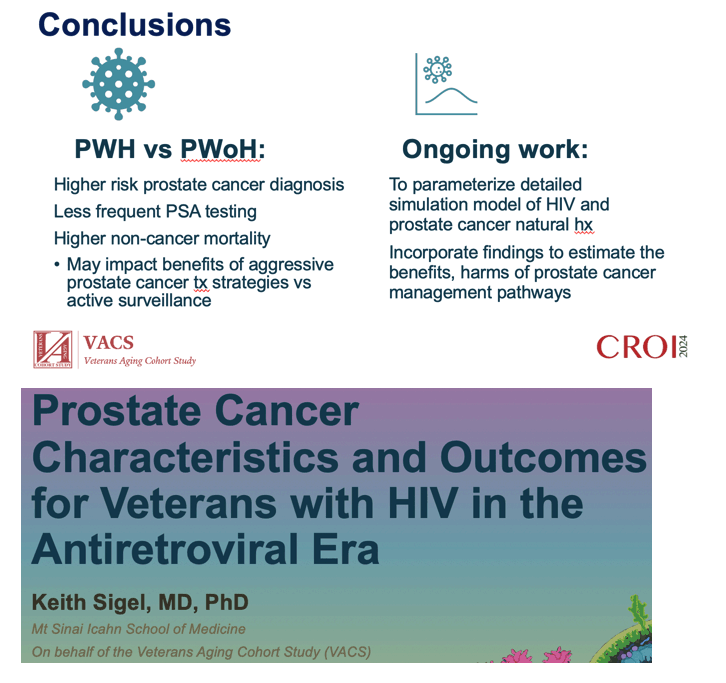
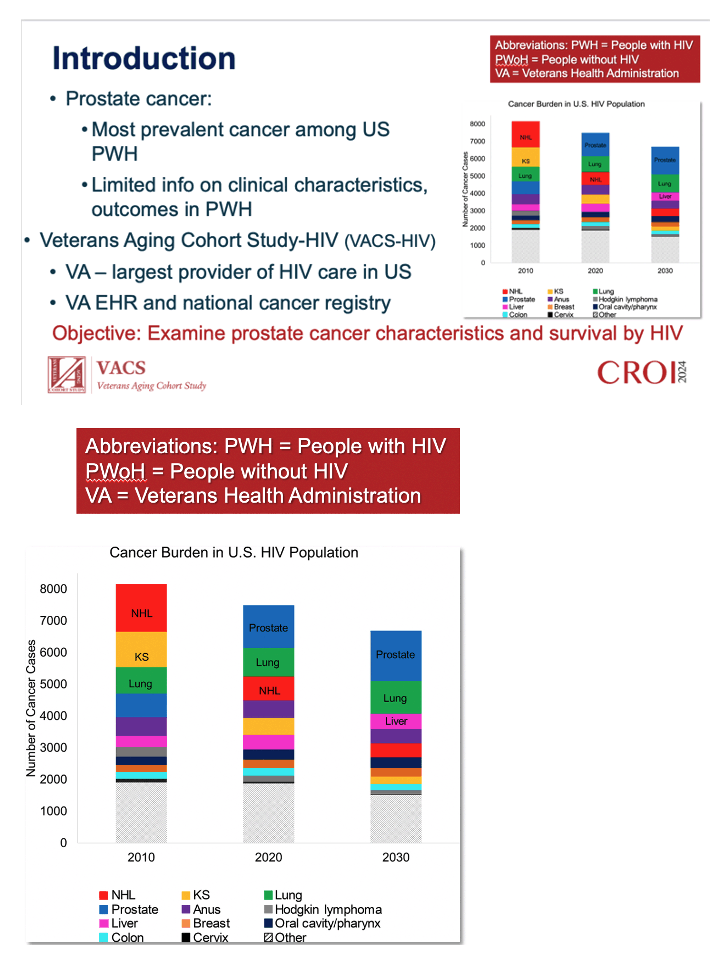
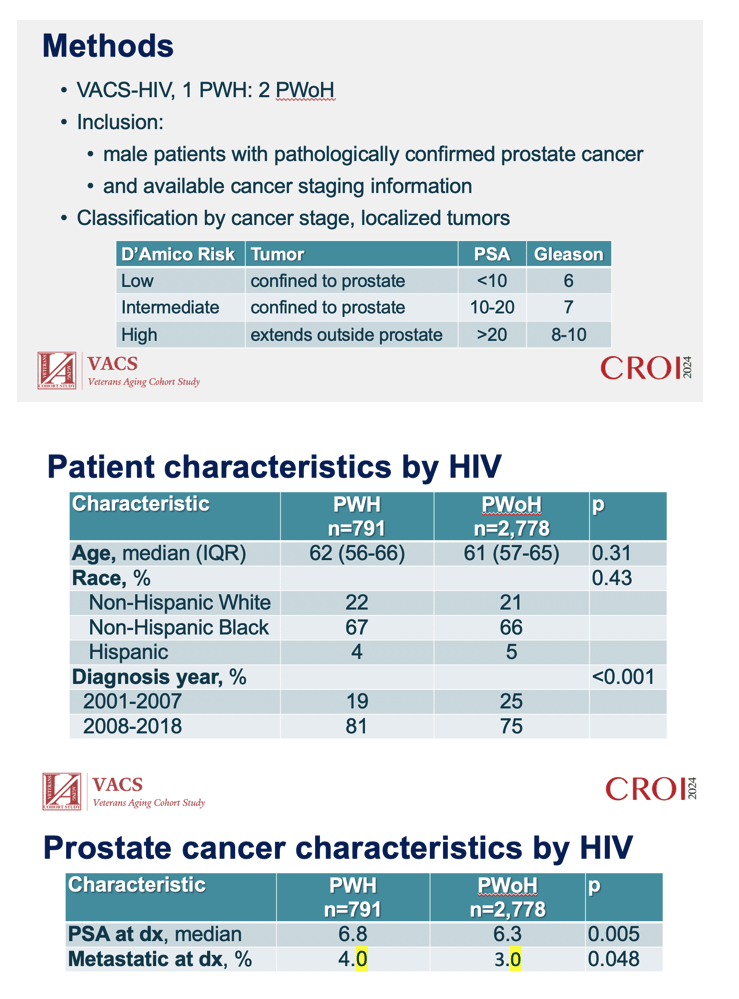
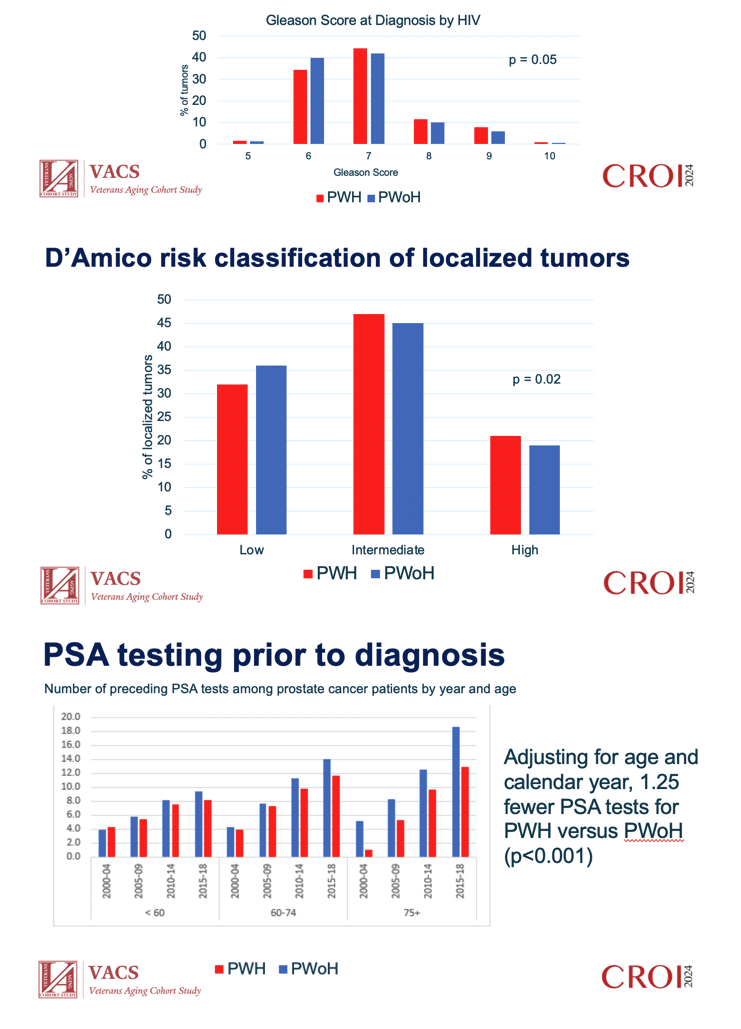
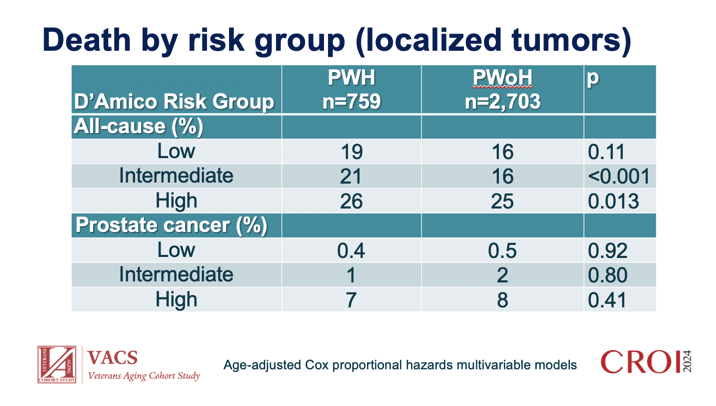
|
| |
|
 |
 |
|
|